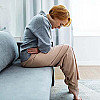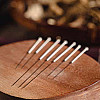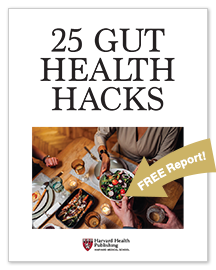
5 timeless habits for better health

What are the symptoms of prostate cancer?

Is your breakfast cereal healthy?

When pain signals an emergency: Symptoms you should never ignore

Does exercise give you energy?

Acupuncture for pain relief: How it works and what to expect

How to avoid jet lag: Tips for staying alert when you travel

Biofeedback therapy: How it works and how it can help relieve pain

Best vitamins and minerals for energy

Should you take probiotics with antibiotics?
Pain Archive
Articles
Getting a leg up on sciatica
Sciatica's (pronounced sigh-AT-eh-ka) hallmarks are pain and numbness that radiates down the leg, often below the knee. In nine out of 10 cases, sciatica is caused by a displaced disk in the lower spine.
The best medicine is often patience — with some stoicism mixed in — because the pain often goes away, even if the problem disk does not. Researchers have found that the pain usually improves within a month.
Which painkiller is safest for you?
It's more important than ever to consider your particular health risks before popping a nonprescription pain reliever.
Have a headache, muscle strain, or maybe arthritis pain? Don't reach for just any over-the-counter (OTC) remedy. Nonsteroidal anti-inflammatory drugs (NSAIDs) such as ibuprofen (Advil, Motrin), naproxen (Aleve), and aspirin are commonly used OTC painkillers. So is acetaminophen (Tylenol). For decades, these drugs were thought to be entirely safe — justifying the ability to purchase them without a doctor's prescription.
But the thinking on OTC painkillers has changed now that we know more about their risks. And it's especially important to navigate these medications with care. Here are guidelines to help you narrow the options.
Can hot cocoa ease pain from peripheral artery disease?
Research we're watching
Hot cocoa may be just what the doctor ordered… for leg pain. A small study published February 14 by Circulation Research found that adults with peripheral artery disease (PAD) who drank a specially designed hot cocoa had less PAD-related leg pain when walking than those who didn't drink the cocoa.
PAD is a condition in which fatty deposits collect and reduce blood flow in arteries outside the heart — most commonly in the legs. People with PAD commonly experience pain when walking. For this study, researchers gave 44 people with PAD a specially designed cocoa-containing beverage three times a day for six months. The cocoa drinkers were able to walk on average almost 140 feet farther in a timed walking test than people who drank the same amount of the same beverage that didn't contain the cocoa. The cocoa drinkers also had some improved muscle function and blood flow into the calves. While the drinks were specially designed for the trial, the researchers speculated that cocoa may contain an ingredient that helps muscle cells using oxygen more efficiently.
4 ways exercise helps arthritis
Even the healthiest people can find it hard to stick with an exercise regimen — and if you suffer from the joint pain of arthritis, moving your body may be the last thing you want to think about. But regular exercise not only helps maintain joint function, it also relieves stiffness and reduces pain and fatigue.
If you have arthritis, you want to be sure your exercise routine has these goals in mind:
4 ways to turn good posture into less back pain
Most of us get back pain at some point in our lives. It may be due to a sports-related injury, an accident, or a congenital condition such as scoliosis. But most of the time, upper or lower back pain develops during the course of day-to-day life. Repetitive activities at work or home, such as sitting at a computer or lifting and carrying, may produce tension and muscle tightness that result in a backache. One solution to preventing back pain is to improve posture.
In addition to improving your posture, general physical fitness and a healthy weight are important are important, too. But the surprisingly simple act of paying attention to improving your posture can go a long way.

5 timeless habits for better health

What are the symptoms of prostate cancer?

Is your breakfast cereal healthy?

When pain signals an emergency: Symptoms you should never ignore

Does exercise give you energy?

Acupuncture for pain relief: How it works and what to expect

How to avoid jet lag: Tips for staying alert when you travel

Biofeedback therapy: How it works and how it can help relieve pain

Best vitamins and minerals for energy

Should you take probiotics with antibiotics?
Free Healthbeat Signup
Get the latest in health news delivered to your inbox!
Sign Up











